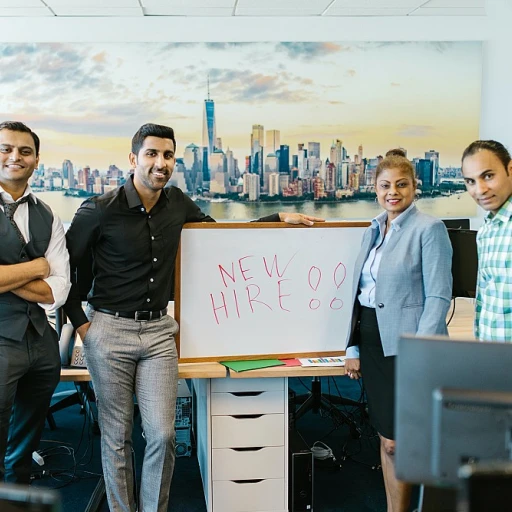Understanding Remote Work Policies
Key Aspects of Remote Work Guidelines
The successful transition to or enhancement of remote work practices often rests heavily on a solid foundation of well-defined policies. When senior leaders are tasked with crafting or refining these guidelines, a number of strategic questions come to the fore. Companies, whether venturing into remote work for the first time or optimizing existing policies, must understand the vital components involved. Efficient remote work policies are deeply tied to the core values and objectives of the organization. Leadership teams need to delve into questions around the company's long-term vision while embracing flexibility. As remote work becomes increasingly prevalent, leaders are urged to harness insights that promote not only business continuity but also sustainable growth and success.- What Policies Must Be Clear? Senior leaders need to ensure remote work guidelines clarify expectations about availability, work-life balance, and output quality. Addressing these aspects helps team members navigate their personal and professional lives with confidence.
- Consistency Across Teams: Leaders must inquire into how remote work policies are consistently communicated and enforced across different departments. This strategic approach prevents confusion and supports an inclusive company culture.
- Adaptability and Feedback: Senior executives should explore mechanisms for policy feedback. It's crucial to establish open communication channels to gather insights from team members about the challenges they face.
Tools and Technology Support
Equipping Your Team with the Right Tools
In the realm of remote work, the right technology can significantly affect success. Senior leaders must consistently gauge whether their current digital tools meet the strategic needs of their business. A robust suite of tools promotes efficient communication, fosters collaboration, and streamlines decision-making processes. To ensure your organization has the best setup:- Assess Current Tools: Periodically assess if your existing tools align with evolving company goals. Does your current setup still support your long-term objectives and desired company culture?
- Integrate Seamlessly: A seamless integration of tools into your daily operations can reduce friction for team members and enhance productivity.
- Prioritize Security: With digital transformation comes the necessity for strong security measures to protect sensitive company data.
Maintaining Company Culture Remotely
Fostering a Cohesive Team Culture from Afar
In a remote setup, maintaining a strong company culture becomes a strategic priority for any organization. Senior leaders must acknowledge that culture isn't confined to a physical office; it permeates through the virtual channels that connect all team members. To nurture a sense of belonging and keep the company's ethos alive, incorporating certain leadership strategies can be beneficial.- Define and Communicate Core Values: Clearly articulating your organization’s core values ensures everyone is aligned, even when miles apart. Regular communication through digital platforms will help reinforce these values effectively.
- Cultivate Trust and Transparency: Trust is fundamental to high-functioning remote teams. Encourage open communication and share insights into business decisions with transparency to foster a culture of trust. This approach will likely engage employees and strengthen their connection to organizational goals.
- Organize Engaging Virtual Events: Virtual team-building activities or weekly catch-ups facilitate social interaction, which is crucial to replicating the camaraderie of traditional workplaces. These informal gatherings can be a breeding ground for bolstering team spirit and cohesion.
- Evaluate Technological Support Tools: It is essential to have effective communication platforms in place to maintain a sense of unity. The choice of tools can significantly impact team culture. Learning more about how a Slack bag supports remote work can provide insights into facilitating seamless communication.
- Encourage Employee Recognition: Positive reinforcement and recognition, whether through virtual shoutouts or digital badges, can motivate and strengthen ties among team members. Celebrating milestones and achievements should remain a priority in a remote setting.
- Promote Work-Life Balance: Senior leaders must be role models in prioritizing work-life balance. Encouraging flexible hours and respecting non-work times can build a strong, sustainable culture where employees feel supported beyond their professional roles.
Career Development and Growth Opportunities
Fostering Professional Growth in a Virtual Environment
Career development remains a cornerstone of employee satisfaction and is crucial in retaining talented team members. In a remote work environment, senior leaders must establish clear strategies to facilitate growth opportunities for their teams, while also maintaining a satisfying work life balance. Here are several inquiries leaders can engage with:- What strategic questions can help identify personalized growth paths for team members? Adapting to remote work settings encourages leaders to tailor growth opportunities. Understanding the strengths and aspirations of each team member can guide them in fostering an environment that supports their personal and professional ambitions.
- How can organizations provide mentorship opportunities remotely? Mentorship remains integral to career development. Companies can implement virtual mentoring sessions, pairing experienced senior leaders with juniors to aid their progression through remote collaboration tools.
- What learning and development resources can be made accessible to a distributed workforce? Offering access to digital courses, webinars, and certification programs can bolster skills development. Leaders should encourage employee engagement by allocating time for learning within work schedules and endorsing an open communication policy regarding career pathways.
- What role does leadership style play in remote career advancement? Leaders must adapt their styles to support remote team dynamics. Engaging in good questions during regular check-ins and interviews can provide insights into individual experiences and facilitate better support tailored to employee needs.
- How can feedback loops be optimized for professional development? Continuous feedback is key. Establish transparent feedback mechanisms and follow questions from team members to refine growth strategies. Effective feedback contributes to problem solving, decision making, and long-term career advancement.
Handling Remote Work Challenges
Tackling Remote Work Obstacles
Navigating the intricacies of remote work can be challenging for any organization, especially when unpredictability becomes a factor. Senior leaders in remote work environments face a multitude of questions when devising strategies to handle these challenges effectively. Leaders must adopt a problem-solving mindset, critically assessing the potential hurdles that could impede business success. This includes staying attuned to digital transformation needs and employing strategic questions to understand how the organization can adapt and thrive remotely. Senior leaders should also consider the impact of remote work on employee engagement and work-life balance. Strategies are necessary to ensure that team members do not feel isolated and maintain motivation. This involves fostering a supportive company culture where open communication is encouraged, allowing team members to voice concerns and share insights freely. In addition, senior executives must be agile in their decision-making process. Developing long-term strategies that are flexible enough to accommodate unexpected changes is essential for sustaining productivity and morale. Encouraging collaboration within the team and listening to their questions can provide crucial insights that guide the organization through digital challenges. By addressing these strategic questions and implementing comprehensive plans, senior leaders can better facilitate a remote work environment that not only survives but thrives, leading to sustained organizational growth and success.Feedback and Communication Channels
Encouraging Open Dialogue for Effective Feedback
In the landscape of remote work, fostering an environment that encourages open communication and feedback is pivotal for senior leaders. A robust feedback and communication channel can bridge the gap created by physical distance, enhancing employee engagement and collaboration. Leaders must ask strategic questions that elicit meaningful insights from their team members, such as what challenges they are facing or how company policies could be improved. This feedback loop is crucial for understanding the evolving needs of a team in a remote setting.
Effective communication also involves regular check-ins with team members, offering a platform for personal and professional growth discussions. Questions such as "How can we better support your work-life balance?" or "What tools do you feel are essential for your role?" can guide leaders in decision making tailored to their team's needs. By consistently addressing these issues, companies foster a culture where employees feel heard and valued, leading to increased satisfaction and productivity.
Implementing a clear channel for feedback doesn't just benefit the team; it also enables senior executives to hone their leadership style. By actively seeking and acting upon feedback, leaders not only improve their own strategic decision making but also demonstrate a commitment to the company's long-term success.
Regular feedback sessions or surveys can assist in identifying areas of improvement while promoting a transparent leadership approach. Open communication and consistent questioning play a pivotal role in maintaining the strength of both employee relationships and company culture, establishing a robust foundation for tackling any remote work challenges that may arise.











